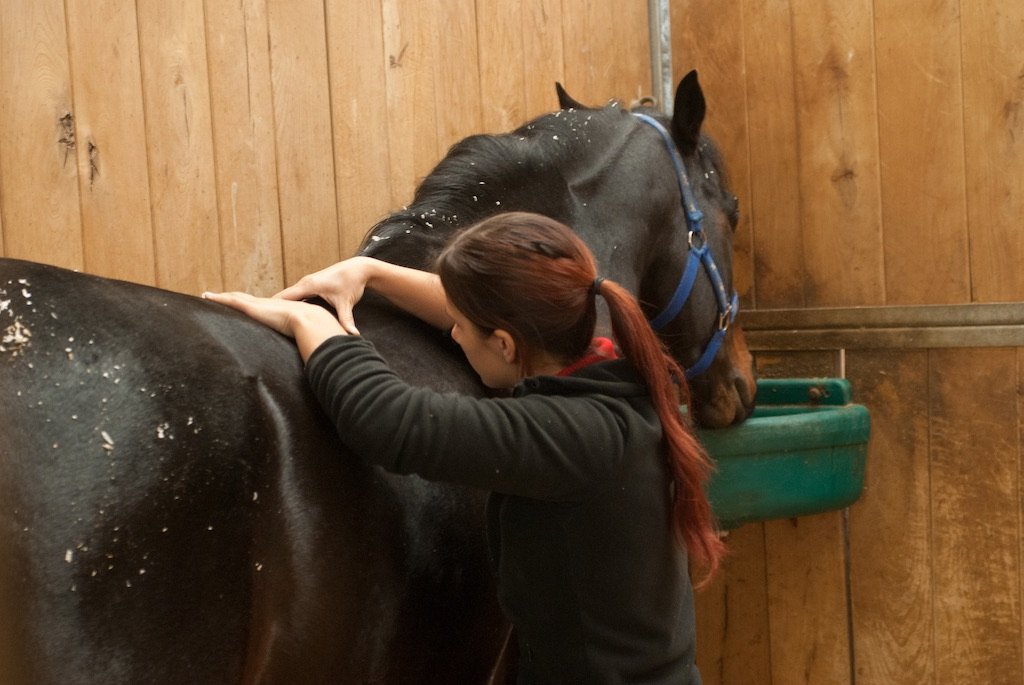The trouble with X-rays
Findings of diagnostic imaging do not always match the symptoms. This can make rehab especially tricky.
Winter is over – time to get back to work!
If your horse has had some time off from work in the winter, now is the time to start slowly bringing them back to work.
The challenges of good posture – a case study
While static posture can tell us a lot about how the horse uses his body, it doesn’t tell the whole story. Here is an example of a well-functioning horse with poor static posture.
Rehabbing girthy horses - Part Two
You've addressed the pain, you've checked saddle fit, but the horse is still acting up while being tacked up. What now? The answer lies in the nervous system.
Rehabbing girthy horses
Rehabilitating a girthy horse can be a long process. The most important thing is to address the cause.
4 things you need to know about the iliopsoas muscles
The iliopsoas is a group of three muscles that acts as a hip flexor and can often be a source of dysfunction for the horse. Here are some things to keep in mind about this area.
The benefits of resting postures
A lot of horses have a hard time relaxing and finding comfort in their own bodies. By inviting them into a resting posture, we can teach them that it is ok to relax and let go of the tension in their bodies.
Want to try some bodywork with your horse? Here's how!
If you are curious to try some bodywork moves on your horse, but are unsure how to approach it, here are some basic guidelines to help you on your way.
How to retrain a horse
Here is a closer look at the ingredients of teaching good posture – communication, coordination and strength.
What are the goals of retraining horses?
Teaching good movement can be a daunting task. Breaking it down into smaller goals will help us stay on the right path and train in a systematic way.
Restore function first, strengthen second
Strengthening exercises, especially those targeting the core, have become very popular. While we do need to strengthen our horses if we want them to carry us, it is important to…
How to help horses with arthritis?
Despite the fact that changes in joint cartilage are mostly non-reversible, there are things we can do to keep our arthritic horses more comfortable. Here are some management ideas to help keep these horses more comfortable.
Hunter's bump – restoring functionality
We talked a little bit about what a hunter's bump is and how it occurs. In this post I want to delve a bit more into the practical aspect of dealing with this issue.
Should I be worried if my horse has a hunter's bump?
Hunter's bumps are a relatively common sight in horses, especially in big warmbloods. Most horse owners know what a hunter's bump looks like, but not many know where it comes from.
Try this move for the neck fascia.
Tightness in the neck is very common in horses and it is often caused by restrictions in the fascis. Here is a simple move you can try to loosen up your horse's neck.
Don't forget the nervous system!
The nervous system is an important component of restoring functionality in a body and should not be overlooked. Exercises that target the nervous system are gentle, but very effective.
Sticky stifles
The quite common issue of sticky stifles very often indicates an unbalanced hind end. It needs to be addressed not only through strengthening but by re-balancing the biomechanics of the hind end.
The underlying issues
With musculo-skeletal issues, we tend to focus on the dorsal aspect of the horse's body. But very often, the real cause of the problem is hidden underneath.
Whole horse rehabilitation
If we take the traditional approach and focus all of our attention on the injured tendon, neglecting the rest of the horse's body, we might be able to make it better, but for how long?



















